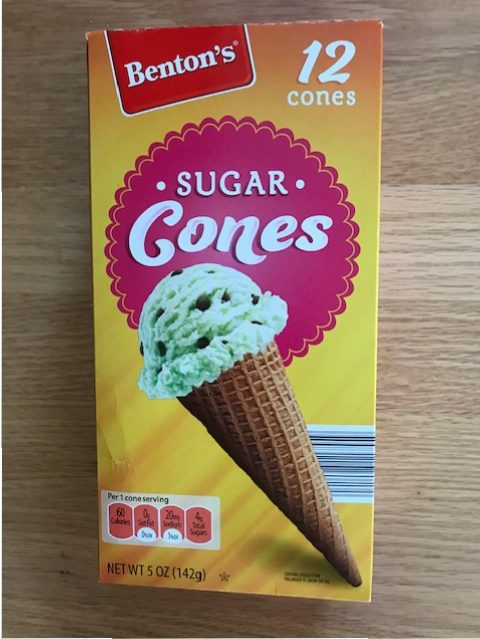My husband, Gary, enjoys researching and writing on different topics that interest him. I asked him if I could publish excerpts from his latest on ice cream and he agreed. Any words in italics are mine.

My Scoop on Ice Cream
Some say chocolate is the food of the gods, but I say it is ice cream. I have always loved ice cream. When I was a kid, I remember we had ice cream in the freezer most of the time. Perhaps this was a luxury associated with my growing up on a dairy farm. My parents bought our ice cream from the same dairy in town where we sold our milk. So the ice cream we ate was (possibly) made from our own milk. The dairy packaged ice cream in both ½ gallon and 2 ½ gallon sizes, and best of all they had delivery routes. The ice cream truck would come to our farm on a set schedule every few weeks. It was like a Schwann’s truck, but only had dairy products.
In the summer we would occasionally make our own home-made ice cream. Our ice cream maker was a wooden stave container in which a metal canister would be placed. After my mom prepared the mix she poured the liquid ice cream mixture into the canister and inserted the scraper (called a dasher). Then ice and salt was packed between the canister and the wooden vessel. The device was powered by an electric motor. The metal canister would rotate and the dasher inside was stationery – so it continuously scraped the surface as the ice cream mix froze. It worked really well and only took about 30 minutes and we could hardly wait until it was ready. I have a lot of good memories of this ice cream making process, and eating it of course.
Now 6o years later, I still love ice cream. There are many types of ice cream available these days so I started doing a little research to learn more about the industry.
What is ice cream?
In non-technical terms ice cream is a frozen blend of dairy ingredients and sweeteners, plus a small amount of emulsifiers and stabilizers. Various ingredients and inclusions are added to create specific flavors.
For some intensive hands-on learning about the science and technology of making ice cream one could attend a well-known 7-day short course at my alma mater, Penn State. They offer the course once a year and limit the class size to 120. The course entitled “Cow to Cone” sells out very quickly despite it costing $2,300. First started in 1892, it is believed to be the first continuing education course offered in the country.

In the USA, to be legally called “ice cream” the USDA regulations state it must contain a minimum of 10% dairy milk-fat and weigh no less than 4.5 pounds per gallon, plus it must not exceed 100% overrun.
What is “overrun”? Overrun is the amount of air whipped into the ice cream base during freezing. It is expressed as a percentage increase in volume of finished ice cream greater than the amount of mix used to produce that ice cream.
For example 100% overrun means 1 gallon of base mix will become 2.0 gallons of finished ice cream. Similarly, 60% overrun means 1 gallon of base will become 1.6 gallons of finished ice cream.
In essence we are buying a lot of air! However some air is needed to give the proper texture and taste. Without any air introduced the ice cream would be like a frozen ice cube.
More expensive brands have much less air than cheaper brands. This can be seen by looking at the density (weight per volume). Expensive brands may be 90 or 100g / ½ cup whereas low cost brands may be 50-60g / ½ cup. This can easily be seen on the ingredient label and it is best to compare a simple flavor like vanilla, which does not have added ingredients impacting the density.
In 2017 the number one brand ranking of all ice cream sales in the US was Breyers and number two was Ben & Jerry’s.1
Consumption
According to one source5, the per capita consumption of ice cream in the USA is 20.8 liter (5.5 gallon). Let’s see how I am doing.
If I average 2 bowls a week at say 3 scoops per bowl and my scoop is ½ cup size; then 2 bowls x 3 scoops x 1/2cup/scoop = 3cups per week.
If I practice this ritual for 44 out of 52 weeks a year (this is an 85% rate- I’m trying to improve upon this) that makes 3cups x 44weeks / 16 cups/gallon = 8.25 gallons.
So I guess I am doing my part.
Sources: 1. Top ice cream brands of the United States in 2017, based on sales (in million U.S. dollars) Statista.com Accessed 11/8/2018 and 5. Chart: Ice cream consumption per capita around the world. Businessinsider.com Accessed 11/9/2018
I hope you’ve enjoyed the (partial) scoop from my husband, on ice cream.